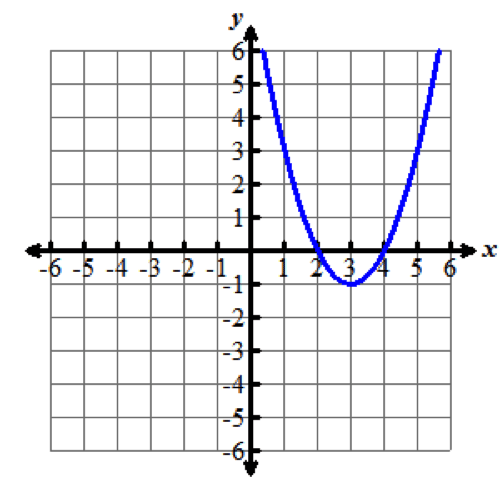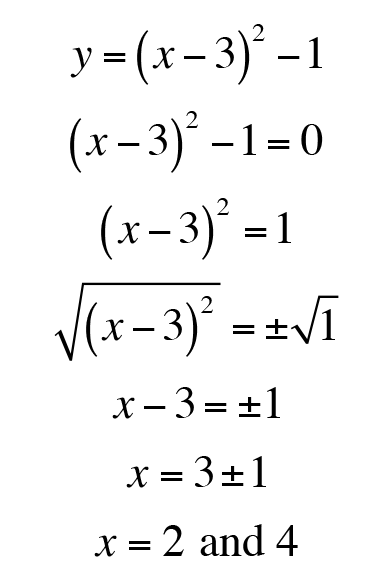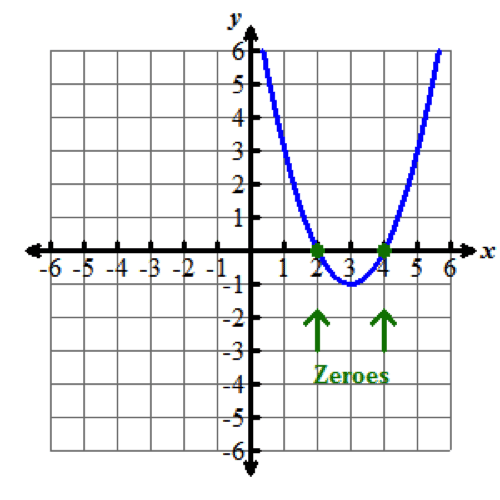Learn It
Which of the following forms of a quadratic equation is easier for you to read and understand?
- y=x2−6+2x+2(4x2)−6x+3−23x2+11−2x
- y=x2−6x+8
In mathematics, we find that certain forms of equations can make our work easier, even when the different forms represent the same equations. In this lesson, we will focus on the standard form and on the vertex form.
Standard form of a quadratic function is written as y=ax2+bx+c. This form is useful when evaluating a function for different values of x. Also, standard form is easy to graph by hand or by entering into a graphing calculator because the equation already is written as “y=”. Take a look at the example below:
The quadratic equation y=x2−6x+8 is written in standard form. Graph this function in your graphing calculator. Your graph should be similar to the one shown on the right.

The vertex form of a quadratic equation emphasizes the exact location of the vertex of the parabola. This form of a quadratic equation is significant because the vertex of a parabola is the maximum or minimum point of the parabola, and represents the maximum or minimum value of the quadratic equation. The vertex form also helps us solve for the exact roots, or zeros, of the quadratic equation. Later in the module, you will learn to change a quadratic function written in standard form to its vertex form.
The vertex form of a quadratic function for this equation is written as y=(x−3)2−1.
You may be wondering why we must be able to find the vertex and zeros of a quadratic function by hand when the calculator gives us these answers so easily. Solving for the vertex and zeros by hand will produce the exact values. When the zeros and the vertex are irrational or decimal values, the calculator provides only rounded, or approximate, answers.
The vertex of this parabola is (3,negative1).

If we set this equation equal to zero, we can find the exact zeros (or solutions) to the quadratic equation.


How can we rewrite a quadratic equation given in standard form as an equivalent equation in vertex form, without having to graph the equation? The following slideshow will take you through the steps of completing the square, a process that will change a quadratic equation into vertex form and help solve for the roots of the quadratic equation.

















